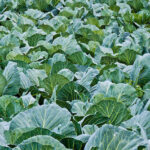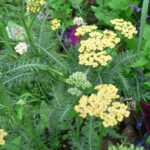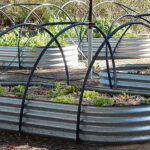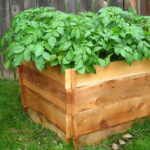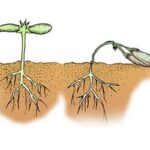Harvesting the fruits of your labor from your own vegetable garden is a very rewarding experience but it is also nice to be able eat your favorite vegetables even when they are out of season. If you want to make sure that you are always stocked with nutritious meal options every single day, preserving vegetables are the best way to go.
But, with so many options, how do you know which are the best vegetables to preserve and do you know the best ways to preserve them? Not all of them are great for canning and preserving so before you go and prepare your mini garden, check out our helpful list below to see which items you should consider.
Now let’s discuss how to preserve fresh vegetables from your backyard garden, and discuss the various food preservation techniques that are best suited to each of these veggies.
Potatoes
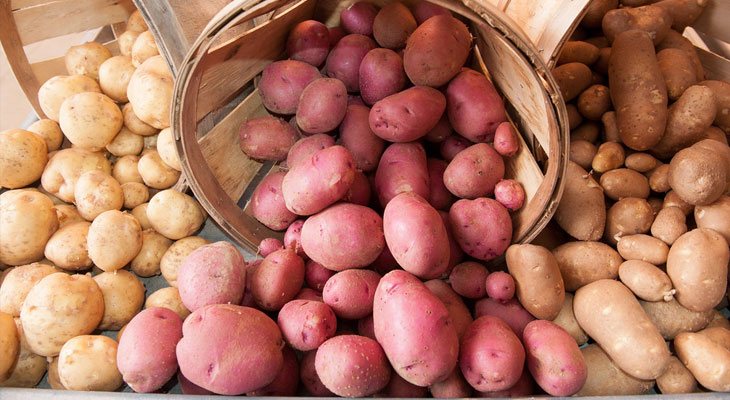
There are three ways to preserve potatoes: freezing, dehydrating and canning.
Before freezing potatoes, make sure to thoroughly scrape the skin, blanch it for 3 to 5 minutes then cool it down in ice cold water for 5 to 10 minutes. Pack up the potatoes in a Ziploc and remove as much air as you can then seal and freeze it.
Another way to do it is to dehydrate the potatoes. Scrub and wash then cool it down or refrigerate it overnight. Slice it without removing the skin so the nutrients still remain then place them in dehydrator trays, making sure that they do not overlap. You can then dehydrate them at 125 degrees Fahrenheit then store in Ziploc bags.
It is also possible to home-can potatoes so you can store them for later use. Simply wash and peel the potatoes and soak them in ascorbic acid solution to prevent it from darkening. Boil them for 2 minutes and place it in a jar. Add in a teaspoon of salt per quart of jar; this helps maintain the taste and texture. Lastly, cover the potatoes in boiling water but do not use the ones you completed the cooking process in as they contain a lot of starch.
Tomatoes
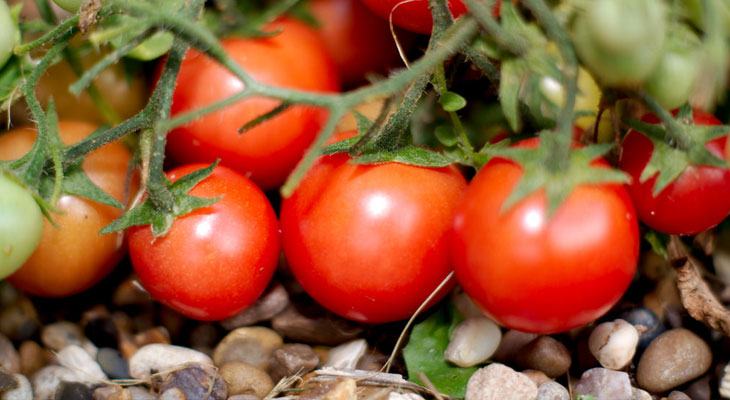
Tomatoes are perhaps among the most popular and best vegetables (or fresh fruits, depending on who you’re talking to) to preserve. You have the option to can, freeze them whole or skinned, turn them into a paste or ketchup or dry them up. With so many types of tomatoes out there, you’ll have lots of preservation options.
Freezing tomatoes is quite easy and it is the best alternative for when you don’t have a canner. Basically, what you have to do is skin the tomatoes before putting them inside the freezer. Simply drop them in a pan of boiling water and the skin should start splitting and sliding off. Remove the skin and seeds, if you want, then cool them off thoroughly. Squeeze as much air as you possibly can when placing inside freezer bags. Then enjoy the frozen fruits as needed.
A major reason why you should preserve vegetables is that they are assured of the quality that comes with each food that is being placed on the table. You can turn your tomatoes into a paste or ketchup which you can eventually use for future recipes — even the frozen fruits work for this purpose. To make a paste from the preserved fresh fruits, just cook them over medium heat and add a teaspoon of salt every five tomatoes or so; do that until you get a pasty consistency.
As for dried tomatoes, you can dry them up for 12 hours inside an oven or around 8 hours in a dehydrator. If you want to go old school, lay the tomatoes under direct sunlight but don’t let them touch the ground – this will take around three days to dry up.
Carrots
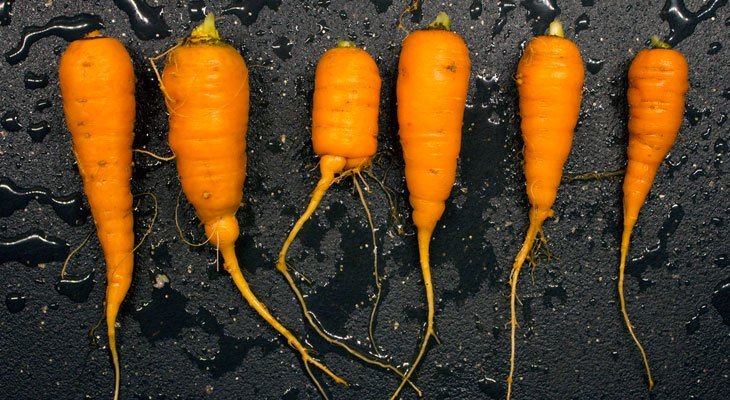
Growing carrots is a lot of fun, and so is preserving them!
If you live in a place with cooler climates, you are in luck. Carrots are root vegetables that do not mind staying in chilly temperatures so you can just leave them in the ground and they’re good. Cover each row with mulch (leaves and straws will do) then add in a layer of plastic or tarp. Add about an inch of mulch on top of the plastic to help insulate them during frozen temperatures.
There is also a root cellar style of preserving them that you can use. It basically involves trimming the leaves off – but make sure that you do not wash the carrots. Then, put them inside boxes or containers and surround with damp straw, sand or sawdust. Make sure that they stay somewhere above freezing temperature with lots of humidity. Going for this route will allow these root vegetables to last around 4 to 6 months. Cool, huh?
Canning, freezing and drying your carrots also work great as alternative ways to preserve them. If you’re like me, you might have a ton of carrots from local farmers markets. Carrots are low acid food so you will have to use a pressure canner to can them. A quicker way to preserve carrots would be freezing – go peel and thoroughly wash them then slice or dice and blanch for three minutes, dunking them in ice water at the end. Place them inside freezer containers after it has been cooled down properly.
Winter Squash
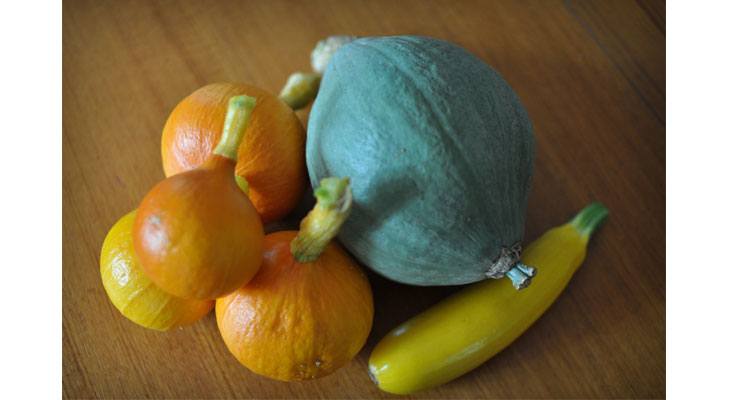
Just like other vegetables, pumpkins and winter squash can be preserved for later use either through drying, freezing or canning.
If you want to make pumpkin purees, butters or preserves, the only route to go is to freeze them. A few things that you need to keep in mind: make sure to select full-colored pumpkins that have fine texture. After washing your pumpkin and cutting them into small sections, cook them until soft them remove the pulp and mash. Then, cool it off by placing the pan with pumpkin in cold water. Once thoroughly cooled in cold water, put inside containers then freeze.
When canning pumpkins or squash, the only way to go would be to use a pressure canner. As for drying, be sure to cut into small strips first, blanch it then place inside a dehydrator to dry.
Mushrooms
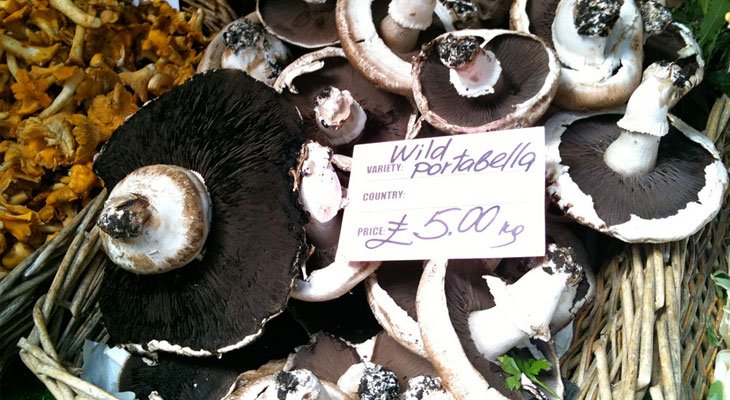
If you want to keep growing in winter, try one of the Far West Fungi grow kits we have in our shop! You may find you have more mushrooms than you know what to do with. Mushrooms grown outdoors, though, can become quite dirty (and icky) especially after a rain. So, how do you properly clean mushrooms to get it ready for food preservation?
Some people would recommend against putting the mushrooms under the water. Although the debris and bugs will certainly be removed, it could also mean that some of its flavor and nutrients could get washed away in the process. The best way around it would be to wash it with as little water as possible and just cut or scrape away as much soil particles stuck in it.
The most common way to preserve mushrooms would be to dry them off. Slice up the mushrooms and remove stalks and other tough parts to get them ready. Then, you can place it inside the oven or a dehydrator to take the moisture out. When using an oven, set it to 150 degrees and keep the door open the entire time. You might also want to go the traditional way and thread the mushrooms and let it air dry.
Other options for preserving mushrooms would be to freeze, salt, powder, pickle or pack them in oil. The beauty to this is that it requires very little time (and resources) to finish it and you can be assured that you have your mushrooms ready when you need them.
Cucumbers
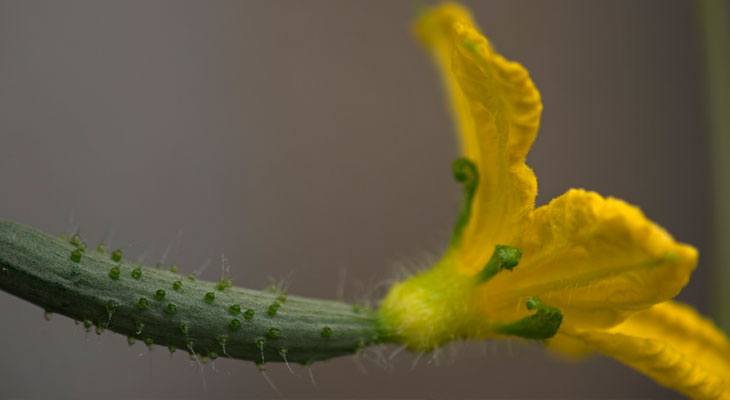
Each one of us has their own opinion about pickles; some like them but some do not. There are also those who opt for sweet pickles while others love it otherwise. The truth of the matter is growing cucumbers often involves large and continual harvests, and knowing the process of pickling vegetables is important when you grow them.
To can cucumbers and make sure they still maintain that crunch, start off by refrigerating cucumbers then washing them once they are already cold. Whether you want them sliced or whole, sprinkle some salt then cover them with a towel and put some ice on top of it. You can let this one sit for about three hours or even overnight.
Another of the ways to preserve your favorite cucumbers would be to ferment them. This involves soaking them in brine solution – and make sure they stay below. It’s a process comparable to preparing pickled vegetables. Start off with cold cucumbers then store the jar in a cool, dry place for about a week or so.
Freezing and dehydrating cucumbers are also another alternative way to preserve your favorite vegetables for later use. To freeze cucumbers, you can wash, slice and wrap them in a baking sheet before placing inside the freezer. You can transfer them inside a freezer bag once they have frozen over. Should you decide to dry your cucumbers, you can place it inside a dehydrator for around 6 to 8 hours or until the moisture has thoroughly been removed.
Cabbage
When it comes to preserving fresh vegetables, cabbage is one of the most popular. Because people have been growing cabbage around the world for so many years, it has tons of associated food preservation techniques. Sauerkraut and kimchi are just a couple of the premiere methods of canning and preserving cabbage. If you’re growing Napa cabbage, you know how important preservation of your cabbage is!
You can lacto-ferment veggies, including cabbage with the Kraut Source. Using the kit from our store and a mason jar you have lying around, you can ferment your winter and spring cabbage harvests to make the most delectable sauerkraut. Again, fermentation is somewhat like making pickled vegetables.
Cabbage heads keep for a long time in the refrigerator. An older head keeps for about 3 weeks and sometimes up to a month. Fresher heads keep for up to 3 months. A plastic bag will keep the freshness for longer, and chopped heads, of course, keep for less time than whole heads.
You can wash the cabbage heads, remove the outer leaves, and cut them into wedges. These wedges can be placed in a freezer-safe container or plastic bag and frozen for 4 to 8 weeks.
You can also blanch the wedges for 1.5 minutes and freeze them on a baking sheet or large baking pan to acheive a longer shelf life in the freezer. After about 12 to 24 hours in the freezer, place the blanched wedges in a freezer bag or container. They’ll keep this way for 9 to 14 months.
Try drying blanched cabbage in a single layer in a dehydrator at 140°F for 10 to 12 hours for crispy cabbage chips! Flip larger pieces every few hours during the drying process. Then store your dried cabbage in moisture-proof bags or containers. Keep them in the refrigerator or freezer for 6 to 12 months.
Sweet Potatoes
While you may not have enough leftover for preserving after harvesting sweet potatoes, they are great when canned. Because they are low acid vegetables, it’s essential that sweet potatoes are pressure canned to ensure botulism doesn’t develop in your canning jars.
Begin by washing your yams, and boil them for 15 to 20 minutes, until they’re somewhat soft. Then cool and peel them, and slice them into sticks or quarters. Place them in hot mason jars, remove air bubbles, and secure the lids. Then pressure can them at 10 pounds of pressure. Quart jars need 90 minutes, and pints need 65 minutes. Sealed, they’ll last 12 to 18 months. Use opened jars within a few days.
Freezing sweet potatoes is another viable food preservation method. You’ll want to wash and cook them first, either roasting them in an oven or placing them in boiling water in the same manner you would if you’re pressure canning. Then place them in freezer wrap, and either vacuum seal them or put the wrapped potatoes in a freezer bag. They’ll keep for up to a year!
Drying sweet potatoes is an option too. Steam blanch your potatoes after slicing them into 1/4 inch rounds. Then dehydrate them in a dryer for 10 hours at roughly 125°F. Keep the dried rounds in an airtight container, and they’ll keep for about 3 months.
Asparagus
Once you know how to grow asparagus, and you have a consistently producing asparagus raised bed or plot, you’ll have tons of spears to harvest. Knowing the best ways to preserve fresh asparagus will help you get the most out of your harvest.
Asparagus is another of the low acid vegetables that absolutely need to be pressure canned if canning is your preferred food preservation method. To do this, wash your asparagus spears, and snap off the tough ends. Then cut your spears down so they’ll fit long-ways in your canning jars. Add enough spears to each jar so they’re packed in, but not too tightly.
Add boiling water, seal the jars, and ensure there are no air pockets present. Then pressure can them for 30 to 40 minutes, depending on their size at 10 pounds of pressure.
Freeze blanched spears of asparagus for up to up to 8 months. After you blanch the spears, cut them into 2 inch sections. Place the frozen sections in a freezer bag or container and store away.
If you have a freeze dryer around, you can process your asparagus this way and store it for up to 10 years in some cases. You’ll want to store the dried spears in an airtight container, and a desiccant packet can help keep them dry. It’s nice to have these on hand to throw into soups, or rehydrate and eat as is. The larger spears aren’t the best candidates for this, though, as they can become stringy when they’re rehydrated.
To freeze dry asparagus, blanch the spears, and cut them into 2 inch pieces. Then freeze them for 12 hours on cookie sheets or a large large baking pan. Place the sheets of frozen asparagus in the freeze dryer with the safety seal until dry. Most freeze driers will automatically turn off when the pieces are dry. Those without autmatic sensors should be in operation for 12 to 18 hours.
Cauliflower
If you’re growing cauliflower, having multiple ways of preserving it up your sleeve offers opportunities to sample the heading veg’s full flavor profile. However, there are some methods that aren’t suited to cauliflower. For one, cauliflower becomes discolored and its flavor changes when it’s canned. Therefore, canning isn’t a recommended food preservation technique here.
Instead, try pickling your cauliflower. Pickling vegetables is a lot of fun! You can make a brine that includes onions, garlic, hot pepper flakes, and various whole spices. This is an opportunity to get really creative! Start by washing the cauliflower head, and removing the stems. Cut the head apart and boil the florets in salted water for 3 minutes. Then drain them.
Next, make your brine. The base of the brine should be vinegar and sugar at a 2:1 ratio. You’ll want to have enough brine to fill your jars just below the brim by about 1/2 inch, and cover your 1 to 2 inch florets at least an inch above them. Place your vinegar and sugar in a pan, and add your spices, leaving out fresh vegetables for now. Boil all the ingredients for 5 minutes.
Then add your florets to mason jars, leaving at least 1 inch above the florets. Then include your fresh veggies like sliced peppers, onions, and garlic. Cover these with brine, seal the jars, and boil can the jars for 10 to 20 minutes depending on your altitude. Then let them sit for at least 24 hours before consuming. They’ll keep for up to 3 weeks in the refrigerator.
Freeze your florets in the same way you would your asparagus spears, sectioning them into 1 to 2 inch pieces, blanching, draining, and then throwing them in a freezer bag or container. They’ll keep for 8 to 12 months.
Get to Preserving!
Preserving fresh veggies is pretty easy, huh?
The processes may sound complicated but they are actually pretty simple to follow through. Don’t be afraid to experiment and give each method a try. Remember to use cold water, and boiling water where necessary.
We hope our list of the best vegetables to preserve has helped you decide what to plant in your very own backyard vegetable garden, or how to use up the produce you acquired from local farmers markets. True, some things we have presented here are not really that expensive in supermarkets (ketchup, tomato paste, etc) but, hey, each dollar can really add up!
Plus, wouldn’t it be great if you know exactly what food gets in your table and where they come from? Many commercialized products often make use of harmful pesticides and insecticides and you surely do not want them anywhere near your family. Knowing the different ways to preserve fresh vegetables is a valuable skill.
So, go ahead and starting preserving vegetables at home. Have fun and enjoy the fruits (erm, vegetables?) of your labor!
Frequently Asked Questions
Q: What vegetables can keep the longest?
A: Sweet potatoes, winter squash, cabbage, and carrots are all excellent candidates for preservation, and they’re all included in our list.
Q: What veggies are good for canning?
A: Asparagus and carrots are both great as canned foods.
Q: How do you preserve vegetables long term?
A: There are so many methods! Canning, freezing, dehydrating, freeze drying, and refrigerating are all viable preservation methods for most fresh vegetables.
Q: What foods are best for survival storage?
A: All of the above fresh vegetables are great for long-term storage. Many can be preserved as canned foods and will last for up to a year until the seal on the jar is broken. You can often freeze vegetables long-term too.
Q: What vegetables are shelf stable?
A: Winter squashes, onions, garlic, cabbage, and potatoes of all kinds are shelf-stable.
Q: What vegetables can last long without refrigeration?
A: Root vegetables and alliums are particularly suited to being stored on a countertop or in a hanging basket in a moderate to low humidity environment.
Q: What foods are not safe for canning?
A: Low acid foods must go through the more intensive process of running the cans through a pressure canner rather than water bath canning to ensure botulism doesn’t develop within the jar. In these cases, if you don’t have a pressure canner, you can freeze vegetables that are low acid foods instead.
Q: How long will canned vegetables in mason jars last?
A: Depending on the vegetable, canned veggies last 1 to 5 years before the seal is broken.


